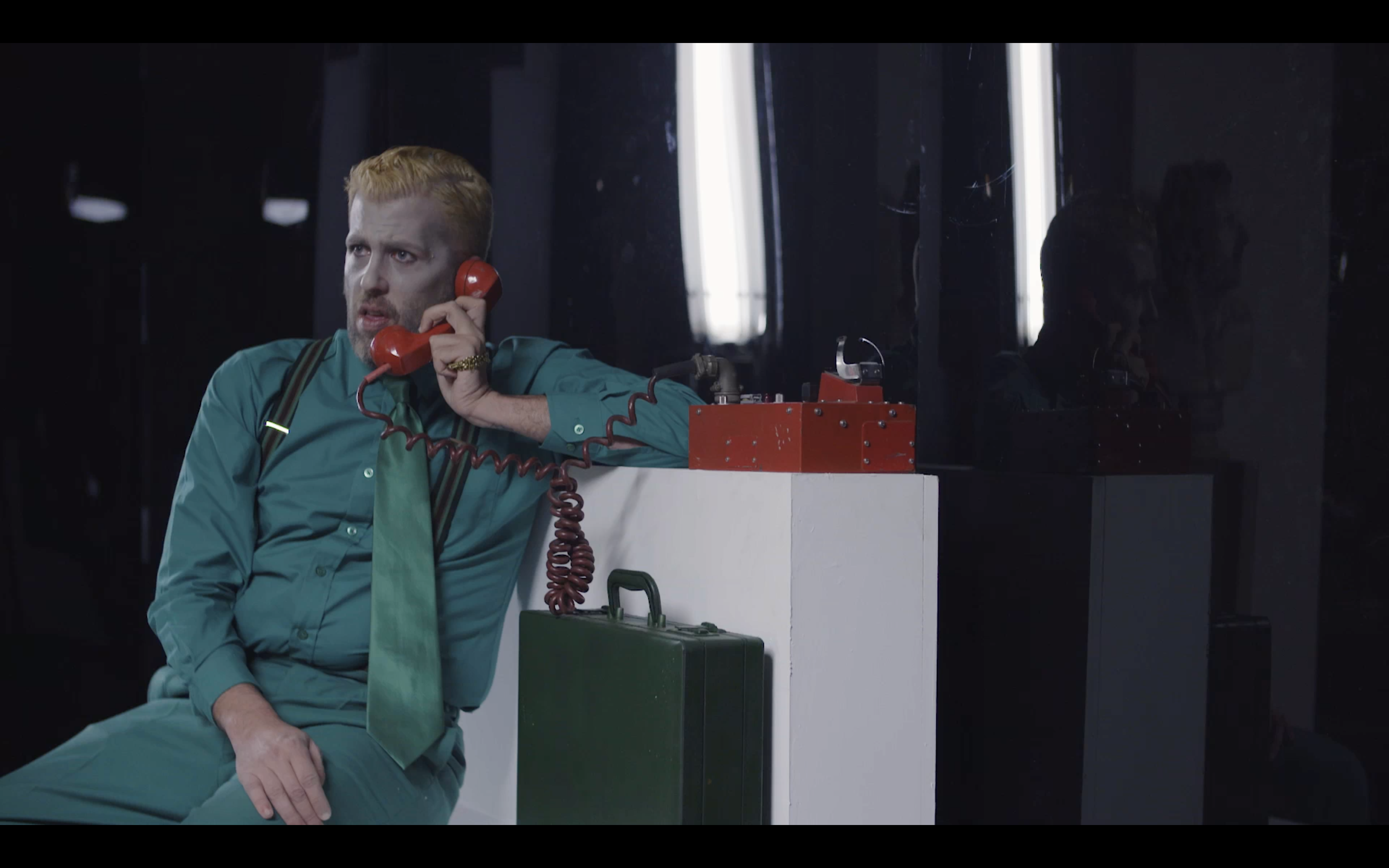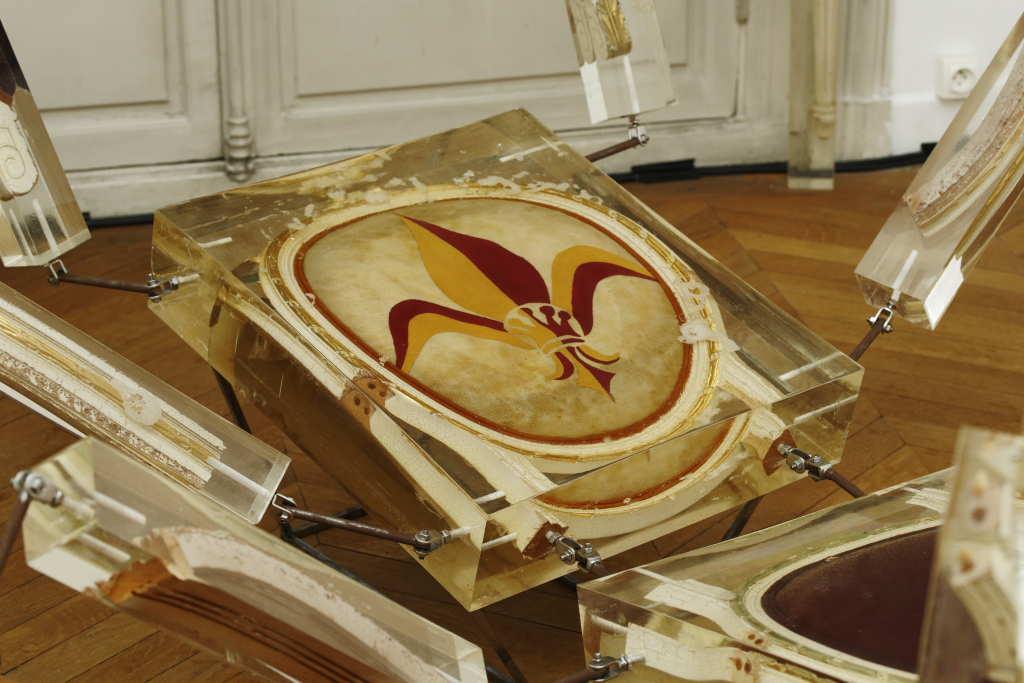A Portrait of Than Hussein Clark
In this essay we paint a portrait of Than Hussein Clark as a hybrid between the figure of the impersonator and the artist.

This short essay aims at painting a portrait of Than Hussein Clark as a hybrid between the artist and the impersonator. Something he told us prompted this argument:
I am deeply distrustful of autonomous forms, whether a sculpture, an image, or a performance. If I make a piece with actors, I will make a play; or when it comes to objects, I would not produce a sculpture, but a table, or a telephone, or a pavilion for instance, things that have an a priori nomination of what they are.
From this quote, one might see the trouble of starting this portrait by declaring Than Hussein Clark an artist, writer, actor, designer, telephone maker, or anything of that sort. (Here is our previous article in which we mention how he declared himself Nervous Breakdown)
Mind you that we are not riding a postmodernist wave of refusing classic categories for the sake of confusion, putting forward a generic idea of interdisciplinarity in Than Hussein Clark’s work. As he told us, interdisciplinary is a neo-liberal value. Our characterisation of hybrid between the artist and impersonator is quite specific, a blurry portrait insofar as it is yet to be unveiled.
Let us proceed in doing so by using the tale of Richard Move, a choreographer and performative arts scholar in New York, who has been an impersonator of Martha Graham for the last twenty years. His research-based imitation of the mother of contemporary dance can surely be regarded as an example of impersonation, although his performance eventually assumes a different shape, whether intentionally or not. Pretending to be Graham dancing the salient moments of her epic ballets, Richard Move provides a characterisation that is not so much a mere imitation of Graham as it is a representation of his own personality as an artist. In this respect, Richard Move’s impersonation comes close to the role of the actor, the one maker of a character with individual traits and features.
Back to Than Hussein Clark, we can see his proximity with Richard Move in the way he pretends to be a telephone maker, or an interior designer, or a film director, or an architect, but eventually lands on the territory of the artist, that is, the quintessential bearer of a specific individual identity, whether intentionally crafted for the viewer or not.

Craft Skills
To continue unveiling this portrait of Than Hussein Clark, let’s take his recent exhibition at Damien & The Love Guru, which includes drawings by mid 20th century actress Selma Vaz Dias. In this case, we could imagine Clark stepping in the shoes of both a scholar of that specific moment in theatre history, but also the skillful designer imagining a set for Diaz’s drawings consisting of curtains, frames, a bench, etc. The crafting of those objects is approached from the point of view of learning a job with an a priori nomination. As Than Hussein Clark told us:
I pick up the craft that is required in order to produce that thing [I want to produce]. Whether it is a table, a telephone, or a movie, or a play, it is about the skills required in order to attack that genre, that kind of vessel. Perhaps, in the end, I would have produced something that is close to a sculpture, or a performance. For me it is about that mental process of engaging with specific materialities in their own terms. If I am going to make a film, I am going to make a Film with the capital F. If I am going to make a carpet, I am not going to make a representation of a carpet, I am going to make an actual carpet.

In a certain binary way, if the exhibition at Damien & The Love Guru looks like an art exhibition, it is as much the responsibility of the context as it is of the—intentional or not—trespassing of Than Hussein Clark from the territory of the impersonator to that of the artist; the embracing of craft skills is part of this journey. In this regard, Than Hussein Clark sees this embrace as having some political dimension:
The craft question is very important to me. I went to high school right at the tail end of the conversation about deskilling, which in the 90s and early 00s, especially in Britain, was meant to point to how artists could be freed from a kind of traditional notion of production. What it ended up doing was to turn artists into entrepreneurs instead of people who are producing things, those who have their means of production in their own hands. What happens by investing objects with manual value is that you can attack the speculative models of art production.
It seems appropriate in this part of our portrait to report an anecdote Than Hussein Clark told us, in which this political dimension of craft skills as ways to appropriate means of production by artists coupled with the attitude of the impersonator stretching into artist, a deception that happened at an art fair:
The first thing I ever showed at an art fair was a carpet priced at 50.000 euros, but no one knew who the fuck I was. This was absolutely scandalous, because what people were used to is that if you didn’t have a reputation you would show a kind of assemblage valued at about 6000 euros, which would have nothing to do with the real value, the one based on the materials, the labor and the time. Collectors would be much happier to buy that assemblage for 6000 euros, as they would actually be creating value in that right moment.
The Scholar
This portrait of Than Hussein Clark would not be complete if we were not mentioning his scholarly attitude, or rather his impersonation of a scholar. Many of his projects start from the point of view of the specialist in a particular piece of art history, literature, pop culture, etc; a kind of detective activity. This attitude swings with art indeed. In other words, Clark’s scholarly investigations eventually become an integral part of his artworks, like imitation becomes art. For example, for one of his last cinematic efforts titled Love at the Frankfurt Autoshow, Than Hussein Clark mentioned to us that he had to become an expert on the practice of car collecting, as well as learn about detective stories from mid 20th century, and more. Watching the film, one perceives these references turning into artistic gestures, yet first resembling scholarly quotations found in the language of academic papers.

In a similar way, the exhibition at Damien & The Love Guru could first be seen as the attempt of an art historian to come up with a retrospective of Selma Vaz Dias’ artworks. However, in the end the show clearly transforms into an artistic work by Than Hussein Clark, or at least a collaboration between the two artists in the exhibition. Likewise, his piece Mrs Maugham or The Pickled Waitress recently presented in the booth of Galerie Crèvecoeur at Paris Internationale stems from Than Hussein Clark’s effort as a researcher:
I wanted to do something in and with Marseille, a place that everybody left to go somewhere else. For example, it was the place from which Gauguin left every time he went to Tahiti. I wondered how I would be able to make an exhibition about Gauguin, who was such a heterosexual pig. I suddenly realised there was a book about him written by Somerset Maugham, a famous novelist from the 20th century who was married to interior designer Syrie Maugham, known for designing all white rooms—a true scandal at the time. I then made the show in Marseille by decorating two opposite rooms, symbolising their divorce. The spider is made of two Victorian wedding chairs, a kind of furniture popularised by Syrie Maugham in the 1930s. So why a spider? I designed it like a portrait of Syrie imagined by Somerset Maugham, as a kind of homosexual panic about marriage, about this kind of wife rampaging around in his life, a scary spider. I also learned that she was preferred to Le Corbusier to decorate the Parisian penthouse of Carlos de Beistegui.

In general, the so-called intra-war period is dear to Than Hussein Clark, from the Art Deco details in his designs to his admiration for the polyhedric figures active at the time such as Jean Cocteau. He mentioned the French artist to us as “someone who was also producing stage sets, yet not as they were artworks. He was writing novels, actually published by a real publishing house, which were reaching a novel-reading public.” Cocteau’s jumps from context to context remind us of Than Hussein Clark’s multifaceted practice, of this figure between the impersonator and the artist in his portrait we are trying to paint here. Similar to Richard Move striving to become Martha Graham and being left with his own artistic identity, failing at perfect imitation (and becoming artist) is greatly more fruitful than boring success.
November 17, 2022
